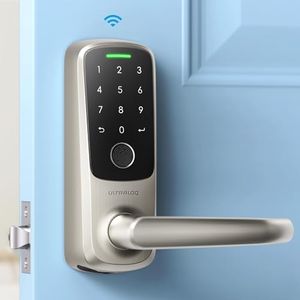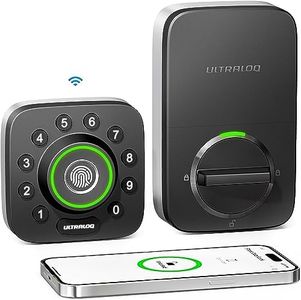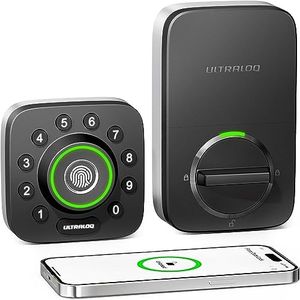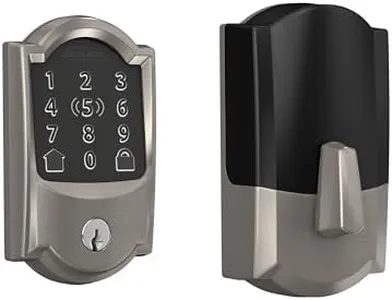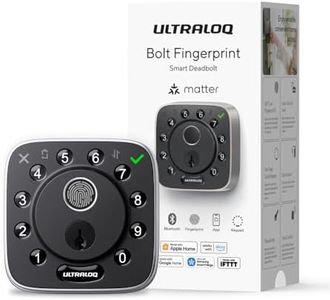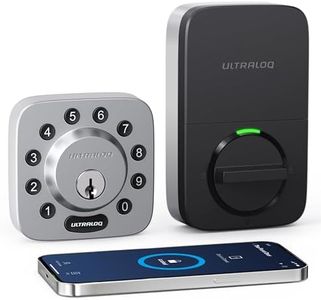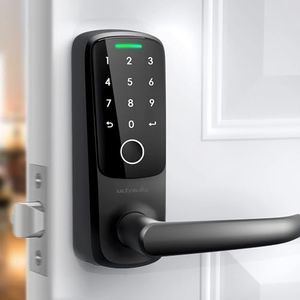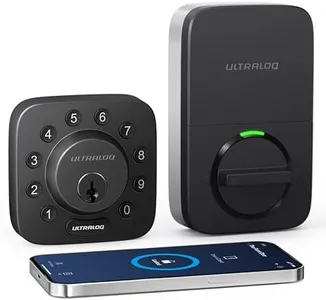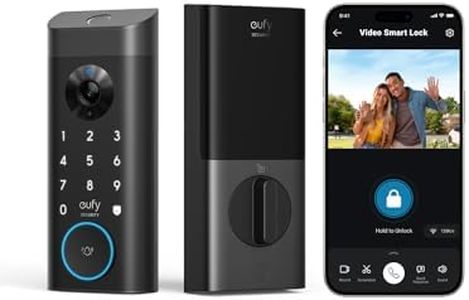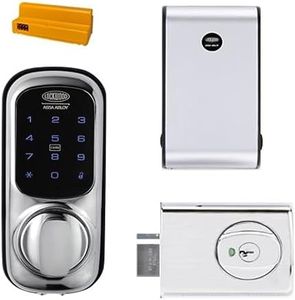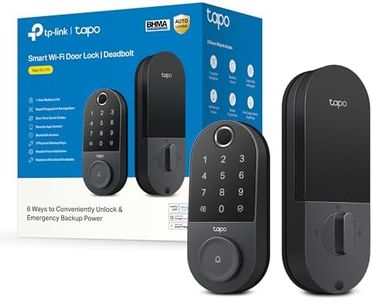We Use CookiesWe use cookies to enhance the security, performance,
functionality and for analytical and promotional activities. By continuing to browse this site you
are agreeing to our privacy policy
10 Best Keyless Locks
From leading brands and best sellers available on the web.By clicking on a link to a third party's website, log data is shared with that third party.
Buying Guide for the Best Keyless Locks
Keyless locks are modern security solutions that allow you to lock and unlock doors without using a traditional key. They’re great for convenience, better access control, and sometimes even for adding extra security. When choosing a keyless lock, it's important to consider how you’ll use it, where it will be installed, and what features will make your everyday life easier and safer. Here’s what you need to know about the main specifications for picking the right keyless lock for your needs.Type of Keyless EntryKeyless locks can use different ways for access, such as keypads, fingerprint scanners, RFID cards, Bluetooth from your phone, or even combinations of these. This basically determines how you unlock your door. If you don’t want to remember codes, biometric (fingerprint) options might suit you. If you want to allow family, friends, or guests easy access, a keypad or app-based Bluetooth lock can be great—just share a code or virtual key. If it’s for an office with lots of people coming and going, RFID cards are fast and easily managed. Think about who will use the lock and how simple or secure you need access to be.
Power SourceMost keyless locks need power—usually batteries, sometimes wired electricity. Battery-powered locks are easy to install and don't rely on your house’s wiring, but you’ll have to replace the batteries every few months or years, depending on use. Wired locks need more work to install and have less risk of losing power unexpectedly, but don’t work everywhere. If reliability in a power outage is important, look for locks that have backup methods like mechanical keys or emergency power options. Choose based on how comfortable you are with occasional battery changes and how critical it is that the lock never fails.
Security FeaturesDifferent keyless locks offer different levels of security. Features can include alarms for tampering, auto-locking after a time, or anti-peep codes (where you can add random numbers to your entry code so people watching can’t guess it). If you’re concerned about break-ins or unauthorized access, look for higher-rated security features. For basic needs—like an interior door or low-traffic exterior door—simple locks are sufficient. For main entry points or places with valuables, choose models with more advanced anti-tampering features and higher security certifications.
Connectivity and Smart FeaturesSome keyless locks can connect to your home WiFi or smart home system. This lets you control or check the lock remotely from your phone, get notifications, or integrate with voice assistants. If you want to check if your door's locked while you're away or let someone in when you’re not home, this is very useful. But if you just want a simple, standalone solution, you can skip connectivity. Think about whether you want the convenience of remote access, and how comfortable you are with internet-connected devices.
Installation CompatibilityNot all keyless locks fit every door or lock type. Some are made for deadbolts, others for lever handles, and some may need a certain door thickness. Always make sure the lock you choose is compatible with your door. If you’re replacing an old lock, measure carefully or look for models made for retrofitting. For new doors or non-standard situations, you might need a little extra work or professional help. Choose based on how handy you are with tools and the type of door you have.
User CapacityKeyless locks can store a certain number of users—codes, fingerprints, or cards. If you have a big family or need to give access to many people (like for rental properties or offices), make sure the lock can handle as many users as you need. For small households, even a low-capacity lock will do, but for frequent guests, staff, or changing users, higher capacity is better.
